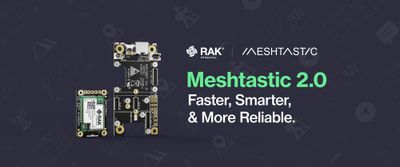The Things Conference 2021 Recap with RAKwireless
Last January 25-29, RAKwireless took part in IoT and LoRaWAN history by attending the hugely successful The Things Conference 2021. During the global, week-long virtual LoRaWAN conference, participants were able to level-up, get access to top-notch LoRaWAN products and services, and have thousands of professional connections at one’s fingertips.
Here are just some of the highlights from RAK’s sessions and beyond:
Gateway Fundamentals with Jose Marcellino and Marc Pous
Discussing Gateway Fundamentals for The Things Conference are Jose Marcellino and Marc Pous. This workshop includes a step-by-step tutorial on how to build your gateway, how to manage a fleet of gateways using Balena, how to connect it to The Things Stack, and how to add more functionalities to the gateway.
As an introduction, they began with listing down the physical elements needed such as nodes and gateways. While, the virtual elements included are the cloud, internet, and network servers.
Jose Marcellino emphasized that developers often overlook the most important thing when connecting a gateway to the gateway server. It is simple knowledge, but the reason why it is significant is that the gateway server’s role is to send data to the gateways for it to function properly. And, this is where LoRa Basics Station comes in.
As compared to the old version, the LoRa Basics Station is an ideal protocol since it has gateway management options, uses WebSockets, crosses through NAT and firewall servers, and is good for cellular networks, mass deployment, and encryption.
After laying those down, Marc Pous talks about how Balena can assist in managing a fleet of gateways. He explains that the Balena runs on software that can control multiple gateways across the globe. This can be done by creating an account in Balena, the steps are easy to understand since the interface is smooth and straightforward.
Onto building your gateway, they utilized the RAK2245 and RAK2287, both gateways will result in the same output. The only difference is that the RAK2287 is low-powered because it uses a different concentrator chip. Nonetheless, they give out the same results and scale easily in different environments. From here, Marc introduces the BalenaHub which assists in recognizing the gateway for you to manage it.
Towards the end of the workshop, they introduced the use of an API key in The Things Stack which can help in giving more functionalities to your gateway. Since the usage is only at 5%, you have lots of room to add various functions.
Overall, the workshop is a direct guide to creating and managing your gateway successfully and efficiently.
To get started, it's very simple, make sure you have:
Hardware:
Software:
- The Things Stack account. Don’t have a The Things Stack account yet? Sign up here (Europe) or here (US)
- balenaCloud account. Sign up here.
- balenaEtcher
Watch the workshop video here
IoT Made Easy with WisBlock: LoRa end-nodes for any industry
The second discussion revolved around RAK’s newest comprehensive modular system, WisBlock! Maria Hernandez and Jose Marcelino walked us through an introduction into how WisBlock was conceptualized and what issues it addressed in the production and prototyping phases.
The session started with Maria introducing the usual methods used in prototyping and the concerns that arise once developers perform tests in the real environment, where inevitably, failures arise.
The discussion then took us through the layers required in deployment, including connectivity, application management, analytics, and visualization for a complete understanding of the basic workflow of a LoRaWAN connected IoT application – using RAKwireless products for the hardware layer, The Things Stack for the Network layer, and Ubidots Platform for the Application layer.
- First, LoRaWAN Devices must be transmitting data over a gateway to The Things Stack
- With our devices transmitting data, we must use a Payload Formatter to translate the incoming sensor data to a JSON payload
- Then, to integrate our devices with a Third-Party platform such as Ubidots, we must have to create a webhook
- To finish, we have to create our customized API using UbiFunctions to finally report the data in our Ubidots account where it can be visualized by our customers
The session showed WisBlock as an efficient solution to all the headaches experienced in the testing and deployment phases, respectively.
Looking for a Weather Monitoring solution?
Looking for a GPS Tracking solution?
If you are interested in this workshop, you can refer to this guide that details all the necessary steps to build up an end IoT solution on your own. Or even better, you can watch the workshop video!
Watch the workshop video here:
Thousands of LoRaWAN enthusiasts were able to connect, share, and participate in this year’s The Things Conference 2021. We encourage you to be part of this great conference experience starting with the Opening Keynote and then explore the sessions that are of most interest to you.
Want to know more about the concept of WisBlock? Download the e-book here.






